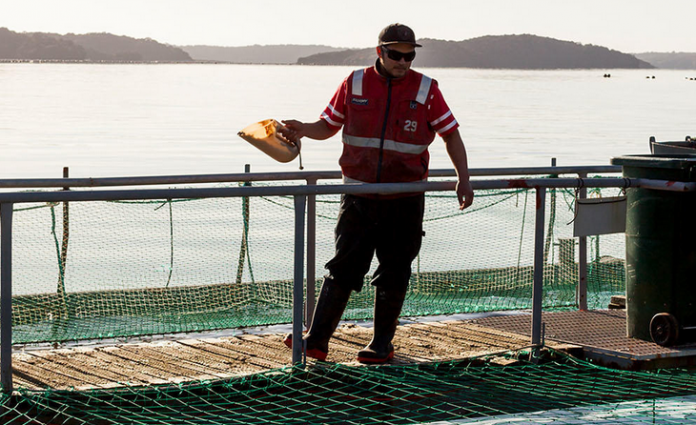One of New Zealand’s major producers of king salmon posted a FY19 EBIT of EUR 37.6 million, close to what it was the year before.
One New Zealand’s oldest publicly listed company posted its 2019 annual report on Thursday. Sanford has commercial fishing and aquaculture operations.
“Underlying or Adjusted Earnings before Interest and Tax (EBIT) for FY19 at NZD 64.8 million (EUR 37.6 million) is comparable to our FY18 of $64.7 million (EUR 37.6 million), which is somewhat disappointing as it again did not meet our expectations for the year,” wrote its CEO Volker Kuntzsch.
The company added that water temperatures in Big Glory Bay, the site of its salmon farms in Stewart Island, New Zealand, reached highs over 17°C, which, in conjunction with an algal bloom, led to mortalities of 5% of its salmon. Harvested salmon volumes at 4,000 GW tonne, were up 15% on last year.
Sales volumes also increased by 16% and sales revenue grew 23%. Higher feed costs year on year are attributable to higher biomass in the water.
“Last year’s salmon result included an $8 million (EUR 4.6 million) one-off gain in the value of the salmon biomass in the water. As a result, year on year profit performance appears flat. However, normalising for last year’s one-off stock adjustment, we are very satisfied with the growth in the underlying performance of the salmon business this year, in spite of the climate-related challenges faced,” it wrote.
The company announced in the year that it is restructuring its fish processing operations, creating three centres across the South Island, shifting from white fish on certain sites to more premium salmon production.
“The build of a new salmon farm barge that houses the salmon feed and the living quarters for our team on the water in Big Glory Bay is underway and new pens will soon be installed. Planning for a new hatchery in Southland is underway, where we intend to grow our smolt to a larger size, before transferring them to our farm,” it added.











